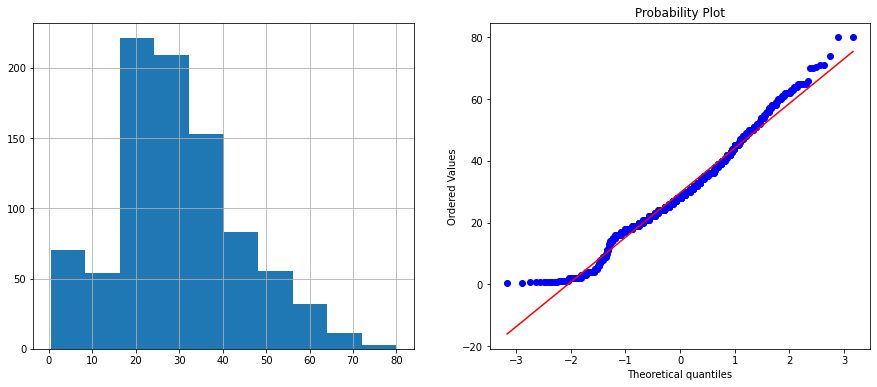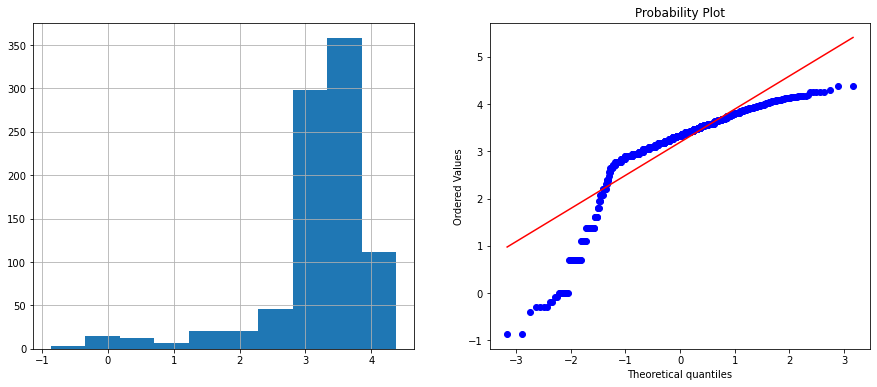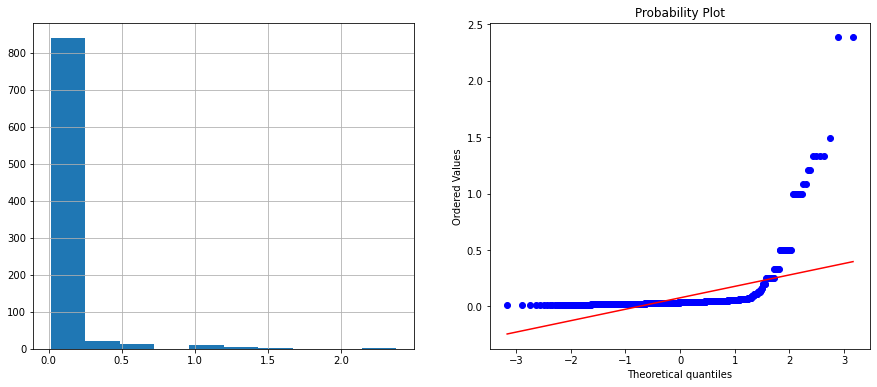一些機器學習模型,例如線性回歸(linear regression) 或 logistic regression 都假設變數下的資料是常態分布(normal distribution 或稱高斯分布 Gaussian);而其他的學習模型也可從變數資料常態分布獲益,因為在常態分布下,變數值跨越的更大的範圍,而這些變數是用來預測Y值(label or target)的,因此,可能會提高機器學習演算法的表現。
假如變數不是常態分布,我們可以使用數學公式,將變數下的資料轉換為常態分布。下列是可使用的數學公式,至於要選擇哪個端視原始資料的分布。
3.1 Logarithm transformation - log(x)
3.2 Reciprocal transformation - 1 / x
3.3 Square root transformation - sqrt(x)
3.4 Exponential transformation - exp(x)
3.5 Yeo-Johnson transformation
3.6 Box-Cox transformation
以 Kaggle 的 Titanic 資料集中的"年齡"變數來說明:
import pandas as pd
import numpy as np
import matplotlib.pyplot as plt
%matplotlib inline
import pylab
import scipy.stats as stats
train_data = pd.read_csv('../input/titanic/train.csv', usecols=['Age', 'Fare','Survived'])
train_data.head()
Rec-no| Survived| Age| Fare
------------- | -------------
0 | 0| 22.0 | 7.2500
1 | 1 | 38.0 | 71.2833
2 | 1 | 26.0| 7.9250
3 | 1| 35.0 | 53.1000
4 | 0| 35.0 | 8.0500
.. | ...| ...| ...
886| 0 | 27.0| 13.0000
887| 1 | 19.0| 30.0000
888 | 0| NaN| 23.4500
889| 1| 26.0| 30.0000
890| 0| 32.0| 7.7500
把缺年齡的位置補齊,缺額共177筆,從現有年齡資料中隨機挑選177筆數值補上。
def impute_na(data, variable):
# fill na with a random sample
df = data.copy()
# random sampling
df[variable+'_random'] = df[variable]
# extract the random sample to fill the na
random_sample = df[variable].dropna().sample(df[variable].isnull().sum(), random_state=0)
random_sample.index = df[df[variable].isnull()].index
df.loc[df[variable].isnull(), variable+'_random'] = random_sample
return df[variable+'_random']
train_data['Age'] = impute_na(train_data, 'Age')
以長條圖和QQ圖(Q-Qplot)來檢視資料,如果資料點都集中在QQ圖的直線上,我們可推論這是常態分布。
def diagnostic_plots(df, variable):
plt.figure(figsize=(15, 6))
plt.subplot(1, 2, 1)
df[variable].hist()
plt.subplot(1,2, 2)
stats.probplot(df[variable], dist="norm", plot=pylab)
plt.show()
diagnostic_plots(train_data, 'Age')

這是最常見的方法。
train_data['Age_log'] = np.log(train_data.Age)
diagnostic_plots(train_data, 'Age_log')

train_data['Age_reciprocal'] = 1 / train_data.Age
diagnostic_plots(train_data, 'Age_log')

和第一個方法一樣轉換後的結果並不理想。
train_data['Age_sqr'] = train_data.Age**(1/2)
diagnostic_plots(train_data, 'Age_sqr')

和前面兩個比起來,效果比較好,然而它還不是常態分佈,而和原始資料比起來改善不大。
